About Ba Ngo temple
Ba Ngo Pagoda is an ancient temple located in the center of Hanoi capital at 128 Nguyen Khuyen street, Van Mieu ward, Dong Da district. The pagoda is called Ngoc Hoi Tu, built in the Ly Dynasty and is now nearly 900 years old.
Ba Ngo Pagoda is a religious architecture associated with many legends and characters in the development process of the history of Thang Long – Hanoi. The pagoda was recognized as a historical-cultural relic in 1993.
Learn the history of the temple
According to the documents from the book Thang Long fairy tale and archeology, the pagoda was built in the reign of King Ly Than Tong (1127-1128).
According to the book La Thanh, the fairy tale of the bay, there was a gourd-shaped earthen mound in the past at the pagoda’s location. In 1281, Ly Hue Tong built Ngoc Ho Tu (Bau Ngoc Pagoda) here. At the temple, there is a well of clear water that never runs dry, located below Tam Quan. Water here is often taken as offering water and wells are also considered treasures of the temple. Later, in the Le Dynasty, the wife of a rich Chinese merchant spent money to restore this temple. Therefore, the pagoda is often called Ba Ngo (Ngo Khach) pagoda.
The history of temple construction and embellishment is recorded over many years. According to Ngoc Ho, the autobiography built in the 17th year of Tu Duc records that:
+ New Year of the Rooster (1861) to renew the 5-room ancestral house
+ In the years Nham Tuat (1862), Quy Hoi (1863), Giap Ty (1864), At Suu (1865) painted statues, cast bells, and made minor repairs.
+ In the Year of the Pig in the reign of King Bao Dai (1935), the pagoda was embellished and repaired on a large scale. As a result, the pagoda has the appearance with full architecture and items of a work of worshiping Buddha: Tam Quan, Tien Duong, Hau Duong, Ancestral House, Mother Palace and many relics, precious gas sacrifices,… Therefore, To this day, the following couplets are preserved:
“Don’t remember the month Mrs. Ngo repaired it
Only know the year Bao Dai was inaugurated”
Sightseeing at Ba Ngo Pagoda
Stepping to the Tam Quan gate, we will see a construction consisting of 2 floors, 8 roofs with 8 curved corners facing the South.
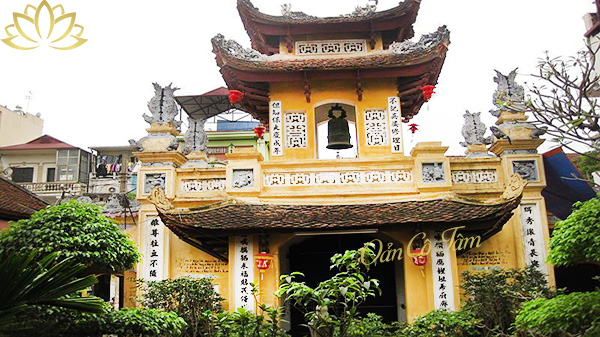
Upstairs is the bell tower, in the middle hangs a bronze bell cast in 1887 bearing the words Ngoc Ho Chung. The lower floor consists of 3 gates, the middle gate is closed all year round, but the 2 gates on either side are usually open with enough width for the auto-rickshaw to pass. The steeple of the pagoda was once the place where many mysterious legends were handed down to this day.
Coming to the temple yard, visitors will see a stone stele and a small well right below the steeple. Nowadays, well water is often pumped up to water plants and wash temple yards.
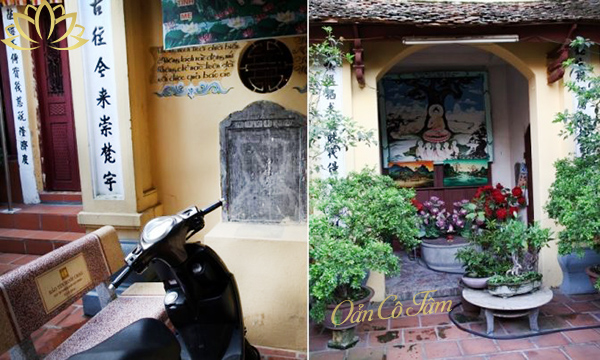
After visiting the temple yard, visitors will go to the Tam Bao car including the front hall, the burning incense and the harem. This is the place to keep many ancient statues, hammock doors, diaphragms, great letters, incense and precious sacrifices.
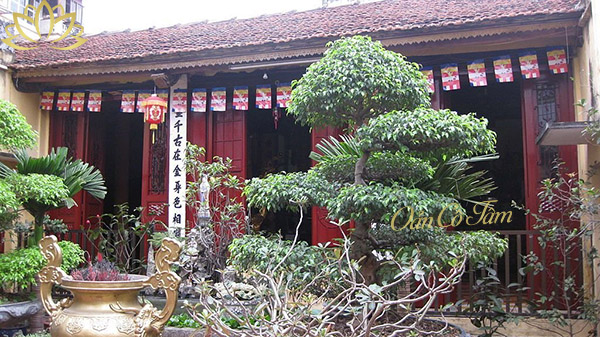
The front of Ba Ngo pagoda consists of 3 compartments, outside the wall there are two stone steles. The special thing is that the eaves inside the façade are built in the form of an extended arch, as wide as one because crab shells are quite common in temples in Hoi An and Hue. The front gate connects to the harem with 4 compartments in the style of Ding (丁). Burn incense deep into 4 compartments, in the main hall, there are many layers of hammock doors, the altars are built at a fairly high level, the heads of three Tam The Buddha statues are almost touching the roof.
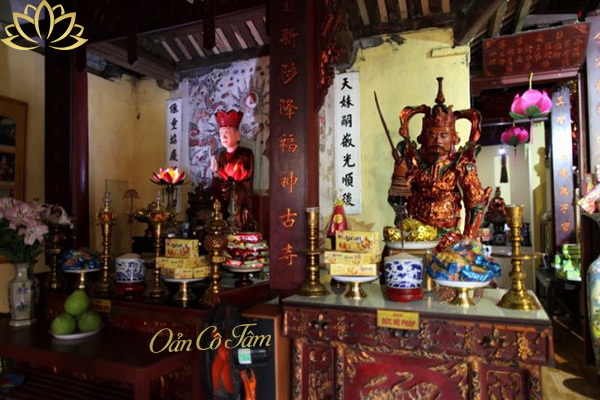
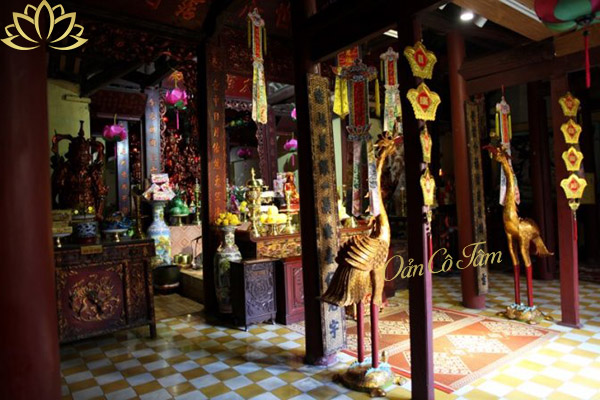
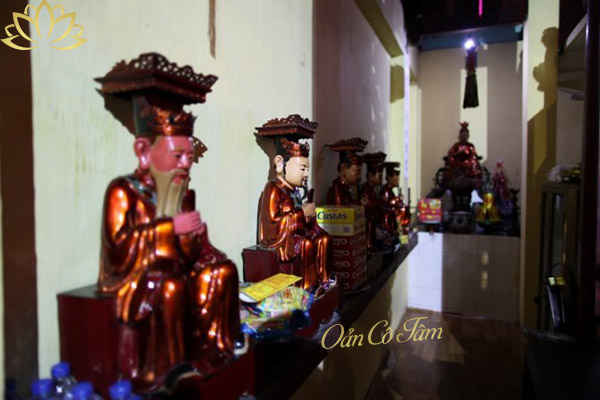
In addition to the two altars dedicated to the ancestors of Bodhidharma and the ancestors of the pagoda who have passed away, there is also an altar for Duc Van Xuong. The To House connects the guest house to a corridor leading to the Tam Bao and has a back door leading to the Mau palace.
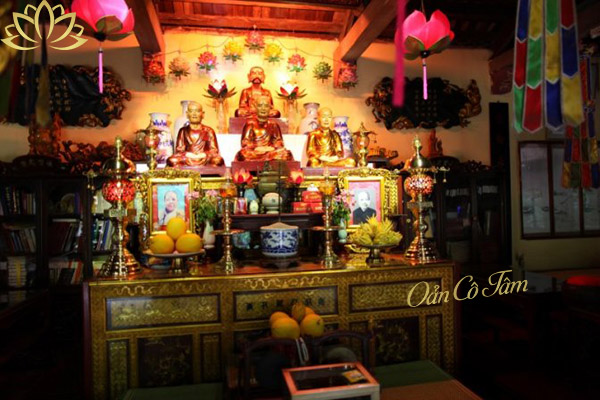
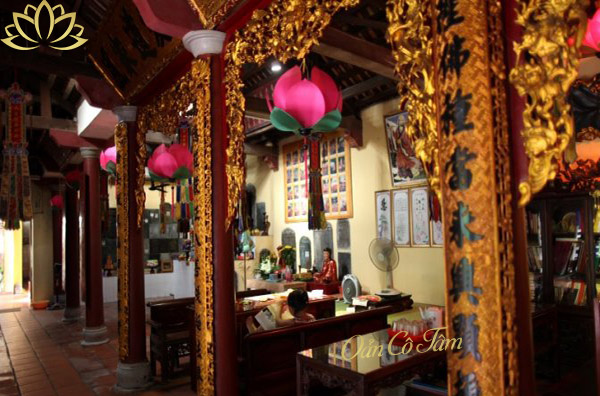
Dien Mau is a row of houses with two roofs in the shape of the word “Nu” with a depth of 9 compartments. This is the place to worship the Mother, Ngoc Hoang and King Le Thanh Tong sitting on the dragon throne. Both sides worship Saint Tran Hung Dao and two family generals Yet Kieu and Da Tuong. The outer half of the Mau temple has a veranda that opens to the front yard and is adjacent to the gate to the left of the Tam Quan gate.
How to buy temple offerings
During the spiritual journey in the capital, Ba Ngo Pagoda in Hanoi is a pilgrimage site for sightseeing and worship, visited by many disciples and tourists. Especially on special occasions such as Tet holidays or Buddhist festivals, the temple welcomes thousands of people to admire the ancient architecture, sightsee and worship the Buddhas with a good heart to pray for peace. health.
At this time, everyone should make sincere offerings to worship at the temple door. The disciple does not need to prepare a full plate of offerings, but simply but sincerely is enough. Coming to Ba Ngo pagoda , we should offer incense to the Buddha with vegetarian and pure foods such as flower incense, ripe fresh fruit, betel nut, sticky rice or sweet rice. When offering the Mau temple ceremony at the temple, we can prepare the salty vegetarian ceremony as we like, but if it is a salty ceremony, we should only offer simple salty foods such as wine, sausages, and chicken.
Among the offerings made to the temple, Oan Tai Loc is the real jade chosen by many people to add solemnity, sacredness and integrity. Ms. Tam’s Oan Tai Loc is a unique and meaningful design offering that can be displayed for a long time without being damaged or moldy.
With an understanding of sacred spiritual beliefs, the artisans at Oan Co Tam have researched and improved the design to create Oan Tai Loc Buddhist works of many sizes to choose from at extremely affordable prices. .
Location and how to go to Ba Ngo Pagoda
The pagoda is located at 128 Nguyen Khuyen street, Van Mieu ward, Dong Da district, Hanoi city. The location of the pagoda is only about 2km to the west of Hoan Kiem Lake.
If you want to go to Ba Ngo Pagoda in Hanoi , you can use private or public transport easily and conveniently. If you take a bus, you can visit the route of bus routes and nearby bus stops: Nguyen Khuyen street (bus 38), Nguyen Thai Hoc (02, 18, 23, 32, 34, 38, 45).
Mysterious legends related to Ba Ngo pagoda
Legend of King Le Thanh Tong meeting fairies at Ba Ngo temple
In addition to the nearly 900-year-old history, Ba Ngo Pagoda is even more special when it is a place where many mysterious legends and legends are handed down.
At the bell tower of the Tam Quan gate of Ba Ngo pagoda, there is a legend that King Le Thanh Tong met a fairy as follows:
Once, King Le Thanh Tong visited Ba Ngo pagoda. The king suddenly saw a beautiful woman standing on the steeple reciting two verses:
“Love the scene here, love the teacher
Although happy, Buddhism does not please people”
The king then met and asked her about the story and wanted to sing with her. She let the king do the work first, taking the title with the 2 verses she had just recited. The king wrote the poem Road of Law as follows:
“Think about the ridiculous cleverness
Although happy, Buddhism is comforting
Shameless carve away the custom
The soul of a five-pointed butterfly and life
Be deep, hope to be exhausted
Waves of grace are easy to awaken
Where is the ecstasy?
The ecstasy is here nine and ten.”
She would like to correct that:
“Spring wind brings the shelf away from customs
The soul of a butterfly dreams of a fairy and life
Be miserable and want to slap it all
The source of thousands of staff’s grace is easy to arouse”…
The king was in awe and invited her to return to the palace in a palanquin, but at the gate of Dai Hung, she disappeared. The king thought that the fairy came to earth, so he built the Vong Tien floor there to commemorate.
Legend of Tran Tu Uyen meeting Giang Kieu
Ba Ngo Pagoda is also the setting for the story of Tu Uyen meeting Giang Kieu in the poem “Bich Cau Miracle” by female poet Doan Thi Diem. Accordingly, the poor student Tran Tu Uyen one day went to see a vegetarian festival at Ngoc Ho pagoda and met a beautiful girl. Tu Uyen got acquainted and discussed poetry and literature that:
“Ngoc Ho has a group of vegetarian monks,
Sorrowful Buddha scene, jubilant – spring festival. ‘
Suppressing the handsome actor,
The land is full of land without anyone”…
When she reached the Quang Van floor, she disappeared. Tu Uyen was ill and had to go to Bach Ma temple to ask for a hexagram, and was told by the god of the dream to go to Cau Dong market in the morning to find it. The next day, I met an old man selling a picture of a woman exactly like the girl, so I bought it and hung it in the house, day by day looking at it, chatting, and inviting me to eat. Then just come back from school and see that the rice soup is ready. Tu Uyen stalked, saw the beauty in the picture come out and kept it, tore the picture away, asked for her name, it was the fairy Giang Kieu. Two people should be husband and wife…
Source: Collected internet.